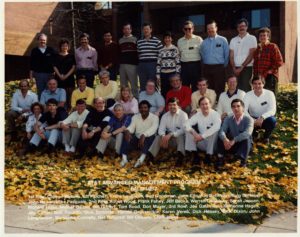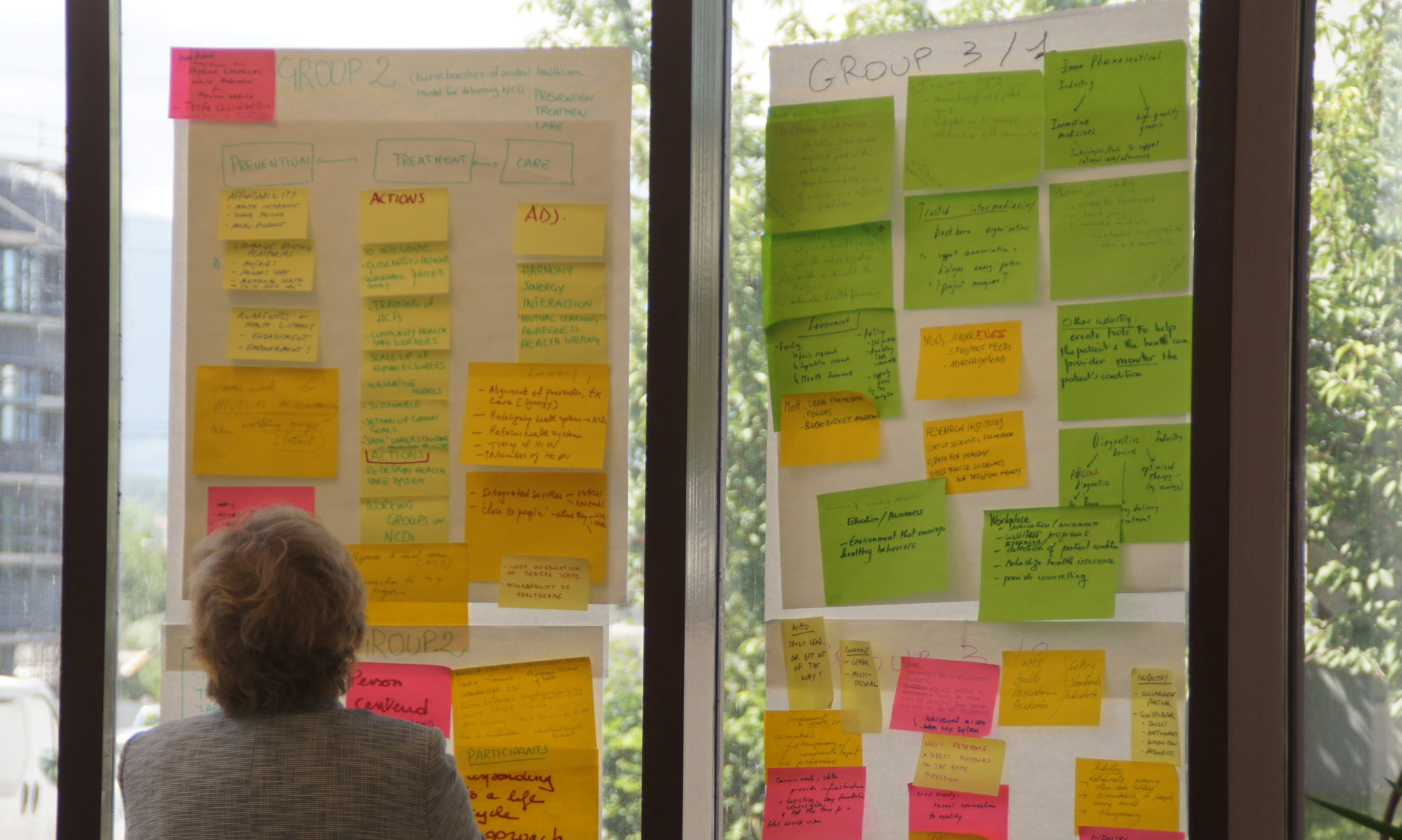Experiences in the Corporate World
Katherine was recruited to join a subsidiary of AT&T just as the monopoly of the famous Bell System, otherwise known as AT&T, was breaking up. The court order mandated the formation of seven “Baby Bells” for the delivery of local phone services and one patchwork combination at the national level of the long distance business, the prestigious Bell Laboratories and a manufacturing entity known as Western Electric. The transition of this combination from these three disparate parts of the old Bell System into a newly constituted AT&T was a strategic challenge – transitioning from a monopoly in control of its telecommunications products and services to a competitive business world while retaining an enlightened human resources policy. When the dust settled, Katherine was working as a government relations executive for the entire (and new) AT&T in Washington, DC.
Rationale for Moving into the Corporate World with AT&T
This corporate adventure in Katherine’s career lasted twice as long as she had initially anticipated but gave her the opportunity to influence the interplay between public and corporate private sector policy on a range of human resources concerns. Katherine was initially attracted to the company, Western Electric, because its headquarters had been in her State Senate district, and she had developed an excellent rapport with the distinctively supportive approach of the Bell System to gender and racial equality in a business environment that was otherwise very resistant to an affirmative embrace of equality.
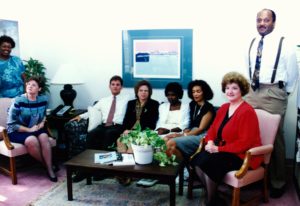
And it happened, also, to be a union company – truly remarkable in the anti-union “right-to-work” state of North Carolina. In fact, in her work as a State Senator, she had received enthusiastic support from the two unions that represented workers at Western Electric (the International Brotherhood of Electrical Workers (IBEW)) and at the local Bell system facilities (the Communication Workers of America (CWA)).
Of course, skeptics will say that the Bell System monopoly had only adopted enlightened human resources policy on gender and race because it had been forced to do so in a class action suit – in fact, a court-ordered affirmative action plan that was still in effect when she joined Western Electric. On the other hand, as she herself came to appreciate, the CEO and the rest of the top management of the company with whom she dealt over the twelve years she was with the company were consistently open-minded and supportive of both gender and racial equality. It was illustrative of the changing times that both the civil rights and women’s rights movements were gaining ground in the US. When she lobbied on behalf of the company for a progressive position on human resources issues in the Washington, DC political environment, she was comfortably backed up by the CEO and his leadership team.
The Proud Record of the Bell System
That said, there were certain illuminating lessons that were hammered home early in her years with AT&T. One was that it was a highly structured, rules-based and hierarchical organization. In her first months, she worked for two bosses who had lived their entire professional careers in the Bell System – 35 and 40 years respectively. They were on the brink of retirement when she joined the company and soon left with very generous retirement terms, but their working lives had operated under a rule book that was not just hundreds of pages long. It was multiple volumes long, filling a whole long shelf of binders! In addition, they were quite proud of having carried their official ID cards every single day, whereas Katherine could never remember to bring hers. Entry into the building was restricted to ID card holders, and she often had to wait at the entrance until someone else in her particular group showed up to verify her identity!
The AT&T rule book, however, was far more extensive than just requiring employees to carry visible ID cards. In fact, it was quite the revelation that the AT&T system had been the model used by the US military in World War II to improve its operational efficiency. The Bell System was indeed a very hierarchical organization whose efficiency was impeccable even if based on everyone following archaic rules. The lifelong careers in the system were a source of pride for a job well done, whether in times of calm or times of turmoil.
The Bell System was typically the first organization called upon to cope with recovery from any weather-related emergencies in the US – snowstorms, hurricanes, floods, you name it. No one stayed at home during these catastrophes. Members of the Bell team were on the job, not only making sure that telecom services were quickly reinstated but also helping to clean up any physical devastation affected by the devastation. One has vivid images of how the devastation from the terrorist attack on 9/11 brought out the AT&T team as among the first responders after the fire and police forces in downtown Manhattan. It was a sense of pride, to be sure, but it was also a lifelong commitment.
The rigidities of a smoothly functioning bureaucratic rule book do have their legitimate benefits. One can agree with the necessity for strict rules and a command structure for the operation of a military organization whose primary objective is to defeat an opponent while also ensuring a defense against that opponent’s aggressive actions. But it can also serve as a barrier to innovation. This was evident for AT&T in this time of transition from a monopoly to a competitive telecom environment. Competitors for the delivery of long-distance services were among the first challenges to the Bell system’s monopoly, but the whole market was in turmoil. And the rule books had to go!
Innovation meant risk taking which meant flexibility which also meant no more lifelong careers in the Bell system. It also meant increasing the accountability for action based on impact. The Bell system had the most remarkable Bell Laboratories that produced many technological inventions (like the transistor) and Nobel prize winners, but it was based on leaving scientists to their own devices to come up with inventions that would or would not then be folded into the monopolistic endeavor. No thought was given to linking inventions to the creation of new markets or actual profits or income-producing products. Even this had to go.
Katherine’s Policy Challenges
Katherine’s personal challenge, then, was to reinforce the enlightened policy of a hierarchy that rewarded service and merit regardless of gender or ethnic or class status – and willingly negotiated with unions to ensure fair treatment and decent wages – while also moving into a competitive business environment devoid of monopolistic protections. While this was an ongoing challenge that required articulating each of the public policy issues on labor relations, employee benefits and employment policies of the American political process in an enlightened way while also being compatible with AT&T’s interests in a competitive business world, it was primarily in two key areas that Katherine made her mark.
First, on civil rights, an issue dear to her heart and ingrained in her previous initiatives, Katherine was tasked with finding a solution to the enormous resistance of the business community and its lobbying associations to a major civil rights bill. This was the first major initiative to address civil rights since the Civil Rights Act of 1964 and to make significant changes in the legal interpretations of civil rights since then, and it had encountered a veto from the US President, George H.W. Bush, in 1990. As reflected in the separate commentary on this website regarding the AT&T role in negotiating a compromise approach in 1991, Katherine was instrumental in persuading the AT&T CEO Bob Allen and the AT&T Senior Vice President for Human Resources Hal Burlingame to pursue an innovative negotiating track through the Business Roundtable with the key civil rights groups. This resulted in the contours of the 1991 bill that eventually passed and was signed by President Bush.
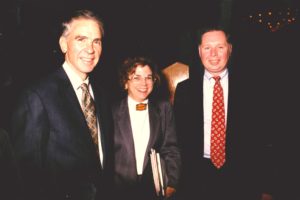
Second, on pension funding reform, AT&T was among the business entities that had accumulated a surplus in the employee pension fund, at a time when many companies, especially in the energy sector, were closing down their pension plans in order to use the surpluses to pay off their senior management (or other business purposes), thereby shifting the plans over to a US government funded guarantee for minimum benefits. There were a number of companies with surpluses in their pension funds that did not want to terminate their plans in order to divert the surpluses into other business activities. So the idea was to revise US law on pension funds to allow the use of surpluses for other RETIREE benefits, such as retiree health expenses.
Katherine was tasked with building a coalition of companies and other interest groups to support this idea. It was in fact a beneficial change for everyone – the companies with the surpluses in their pension funds, the employees and prospective retirees with enhanced retiree health protections, and even, believe it or not, the US Government, since the corporate savings on retiree health expenses would mean higher corporate taxes paid to the US Government! While the initiative took several years to be achieved, Katherine was at the center of mobilizing a coalition to include the Baby Bell companies (AT&T’s enemies on telecom issues but aligned on this one), other enlightened companies, actuarial and pension fund experts, the Congressional Budget Office, members of Congress, the President’s Office of Management and Budget and various interest groups, including the unions (e.g. CWA and IBEW but also the AFL-CIO), the American Association of Retired Persons (AARP) and other senior citizen lobbies.

Within AT&T, Katherine worked with a great team of government relations experts but also with her “clients” in employee benefits and employment policy – and, of course, with the CEO of this increasingly less hierarchical company. In the political world of Washington, DC, she enjoyed building coalitions with her colleagues in the private sector but also with the policy makers, technical experts and advocacy groups that were the key to consensus building on these sensitive human resources issues.
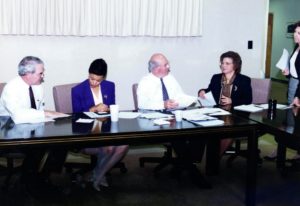
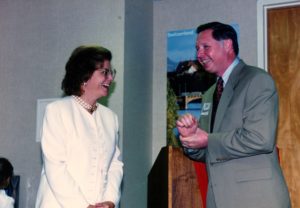
Lessons Learned on the Role of Public Policy in the Corporate World
- Unorthodox coalitions require a lot of work, as one is repeatedly challenged to identify a commonality of interests among diverse groups. Visibility of a common objective needs to be articulated and maintained throughout the effort.
- Open and reqular communications with coalition members needs to be responsive to changes in both directions – explaining changes in strategy to the coalition members and making changes in the strategy at the request of coalition members.
- The coalition may operate to set the parameters of the objective to be achieved, but it may then require momentum from outside the coalition to actually reach the objective.
- Business preoccupations with demonopolization and defensive strategies to maintain existing but outdated markets often lead to naïve decisions about how to build a market that no longer exists in the same way.
- Monopolies like AT&T operate in a mostly domestic political world and may go through setbacks in their business strategies as they try to build a global or at least multinational market.
- This is further challenged by operating in a market that has been traditionally highly regulated at the national level.
- The tendency to classify the private sector as a single entity is pervasive, and there are pressures on businesses that might prefer to deviate from a common business position to avoid disrupting the image of a common front.
- On the other hand, although regulatory oversight is an important role for governments to perform, this oversight needs to adapt to ensuring quality oversight in changing technological circumstances. Regulatory oversight over telecom is different from regulatory oversight of the Internet service providers and electronic giants.
- The AT&T of today is entirely different from the AT&T at the time of divestiture. Regulatory reform will also need to keep up with the changes in the business environment that are driving this new AT&T.
-
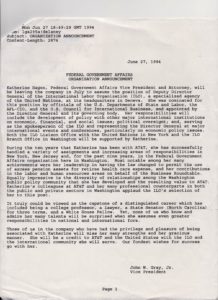
Wishing Katherine well in her move to Geneva
